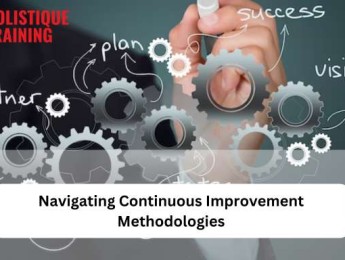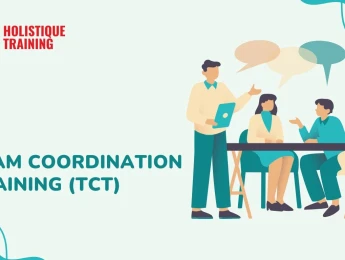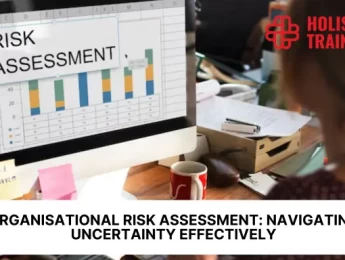- Table of Contents
- Introduction
- Principles of Recruitment
- Alignment with Company Goals
- Fairness and Equality
- Transparency
- Candidate Experience
- Importance of Advanced Recruitment Strategies
- Competitive Advantage
- Efficiency and Effectiveness
- Enhanced Candidate Experience
- Employee Retention and Cultural Fit
- Brand Building and Employer Reputation
- Adaptation to Changing Workforce Dynamics
- Strategic Talent Pipelining
- 12 Effective Recruitment Strategies to Watch Out For
- 1. Define Your Corporate Brand
- 2. Treat Candidates as Customers
- 3. Have Job Ads That Reflect the Company
- 4. Tap into the Hidden Workforce
- 5. Have an Effective Employee Referral Program
- 6. Make Interviews Engaging
- 7. Use Recruitment Data to Make Decisions
- 8. Develop a Recruitment Marketing Strategy
- 9. Engage with Passive Candidates
- 10. Implement Skills-Based Recruitment
- 11. Stay in Touch and on Good Terms with Ex-Employees
- 12. Leverage Contingent Workers
- How Recruiting Software Can Help
- Automated Job Posting
- Resume Screening
- Applicant Tracking Systems (ATS)
- Data Analytics
- Candidate Relationship Management (CRM)
- 5 Main Incentives Applicants Look for in a Potential Employer
- 1. Culture
- 2. Flexibility
- 3. Work-Life Balance
- 4. Work from Home (WFH) or Hybrid Work
- 5. Career Development Opportunities
- Attracting Talent with These Incentives
- Conclusion
Introduction
Recruitment is a cornerstone of any successful organisation, influencing everything from company culture to long-term growth potential. Attracting, evaluating, and hiring new employees is both an art and a science, requiring a deep understanding of human behaviour and organisational needs. Crafting an effective recruitment strategy can be challenging, but building a workforce that drives your company towards its goals is possible with the right principles and innovative approaches.
Principles of Recruitment
Recruitment, the art and science of attracting, evaluating, and hiring new employees, is guided by fundamental principles that ensure a fair, efficient, and effective process. These principles form the foundation of a successful recruitment strategy, aligning organisational needs with candidate expectations. Let's delve deeper into these key principles:
Alignment with Company Goals
Effective recruitment starts with a clear understanding of the company’s strategic objectives. This alignment ensures that new hires contribute meaningfully to the organisation’s mission and long-term goals. To achieve this:
- Identify Key Skills and Attributes : Understand the specific skills, experiences, and personal attributes that are crucial for advancing your company’s goals. For instance, if innovation is a core objective, prioritise candidates with a proven track record in creative problem-solving.
- Future-Oriented Hiring : Look beyond immediate needs and consider how candidates might grow with the company. Hiring for potential and cultural fit can ensure long-term success and adaptability.
Fairness and Equality
Ensuring fairness and equality in recruitment practices is a legal and moral obligation. This principle helps build a diverse and inclusive workforce, driving innovation and improving company performance. To maintain fairness and equality:
- Non-Discriminatory Practices : Develop and implement policies that prevent discrimination based on race, gender, age, disability, and other protected characteristics. Regular training and awareness programs can help embed these practices into the company culture.
- Structured Interviews : Use standardised interview questions and scoring systems to evaluate all candidates consistently. This minimises bias and ensures that decisions are based on objective criteria.
Transparency
Transparency in the recruitment process fosters trust and enhances the candidate experience. Candidates who are kept informed and feel respected are more likely to have a positive perception of the company, regardless of the outcome of their application. To achieve transparency:
- Clear Communication : Keep candidates informed at every stage of the recruitment process. Provide details about the timeline, steps involved, and what they can expect.
- Feedback : Offer constructive feedback to candidates who are not selected. This will help them improve for future opportunities and leave a positive impression on your company.
Candidate Experience
The candidate experience encompasses all candidate interactions with your company during recruitment. A positive candidate experience can enhance your employer brand and attract top talent. To improve candidate experience:
- Respect for Candidates’ Time : Streamline the recruitment process to avoid unnecessary delays. According to Qualtrics , 65% of job-seekers rarely receive any updates regarding their candidacy. Inform candidates promptly about the status of their applications and respect their time during interviews and assessments.
- Engaging and Personal Touchpoints : Make the process as engaging and personal as possible. Use personalised communication, provide a warm and welcoming interview environment, and ensure that candidates feel valued and appreciated throughout the process.
By adhering to these principles, companies can build a recruitment strategy that attracts the best talent and fosters a positive, inclusive, and engaging candidate experience. This, in turn, supports the organisation's overall growth and success.
Importance of Advanced Recruitment Strategies
Advanced recruitment strategies are pivotal in today's dynamic business environment, where competition for top talent is fierce, and the expectations of candidates are evolving. These strategies go beyond traditional methods, incorporating innovative approaches and leveraging technology to enhance efficiency, effectiveness, and overall success in hiring. Here’s why advanced recruitment strategies are crucial:
Competitive Advantage
Companies that embrace advanced recruitment strategies in a competitive job market gain a significant edge. These strategies enable organisations to identify and attract top talent before their competitors do. By leveraging data analytics, social media, and other modern tools, companies can pinpoint the most qualified candidates quickly and efficiently.
Efficiency and Effectiveness
Modern recruitment strategies streamline the hiring process, reducing time-to-hire and cost-per-hire. Automated applicant tracking systems (ATS), AI-powered resume screening, and video interviewing platforms expedite candidate evaluation and selection. This efficiency saves resources and ensures that positions are filled promptly, minimising disruptions to operations. Additionally, leveraging expert global employer of record services can simplify hiring across borders, ensuring legal compliance without the need to establish local entities. Similarly, partnering with specialized recruitment agencies can expedite the process, offering access to a wider talent pool while handling the complexities of local employment regulations.
Enhanced Candidate Experience
Advanced recruitment strategies prioritise the candidate experience, recognising that each interaction shapes the employer brand. By leveraging technology for seamless communication, providing timely feedback, and offering personalised interactions, companies can create a positive impression on candidates, regardless of whether they are ultimately hired. This positive experience encourages candidates to speak highly of the company, amplifying its reputation as an employer of choice.
Employee Retention and Cultural Fit
Effective recruitment strategies focus on technical skills, cultural fit, and long-term compatibility. By using advanced techniques such as skills-based assessments, behavioural interviews, and cultural alignment evaluations, companies can better predict a candidate’s likelihood of success and longevity within the organisation. This reduces turnover and fosters a cohesive, motivated workforce aligned with the company’s values and goals.
Brand Building and Employer Reputation
Advanced recruitment strategies contribute to brand building by projecting the company's modern, innovative image. Candidates perceive organisations that adopt cutting-edge recruitment practices as forward-thinking and employee-centric. A strong employer brand attracts top talent and enhances the company’s reputation in the industry, making it easier to recruit talent in the future.
Adaptation to Changing Workforce Dynamics
The workforce is evolving, shifting preferences towards remote work, flexible schedules, and gig economy opportunities. Advanced recruitment strategies adapt to these changes by incorporating remote hiring practices, offering flexible work arrangements, and tapping into the contingent workforce when needed. This flexibility allows companies to meet today's workforce's diverse needs and expectations.
Strategic Talent Pipelining
Advanced recruitment strategies include proactive talent pipelining, where companies build relationships with potential candidates even before specific positions become available. By nurturing talent pools through targeted recruitment marketing campaigns, networking events, and talent communities, organisations can reduce the time for critical roles and maintain a continuous flow of qualified candidates.
By embracing advanced recruitment strategies, companies improve their ability to attract and retain top talent and strengthen their competitive position in the marketplace. These strategies are essential for navigating the complexities of today’s workforce landscape and driving sustainable growth and success.
12 Effective Recruitment Strategies to Watch Out For
1. Define Your Corporate Brand
Your corporate brand is the face of your company and significantly influences how potential candidates perceive your organisation. A strong brand conveys your values, mission, culture, and work environment. It also significantly decreases recruitment costs since a strong brand = a credible and well-known brand – which means your candidates will easily find and apply to your company. In fact, according to LinkedIn, organisations with a strong employer brand experience a 43% reduction in hiring costs. To effectively define your corporate brand:
- Consistency Across Platforms: Ensure your website, social media profiles, job advertisements, and marketing materials consistently reflect your corporate identity.
- Employer Value Proposition (EVP): Develop a compelling EVP that communicates why candidates should choose your company over others. Highlight career growth opportunities, work-life balance, and company culture.
- Storytelling: Use storytelling to humanise your brand. Share success stories of current employees, highlight significant company achievements, and showcase community involvement.
2. Treat Candidates as Customers
The candidate experience should be akin to the customer experience. Treating candidates as customers involves creating a positive, respectful, and engaging experience throughout recruitment. This approach attracts top talent and enhances your employer's brand. Key steps include:
- Timely Communication: Keep candidates informed at every stage of the process. Promptly acknowledge receipt of applications and provide regular updates on their status.
- Personalised Interactions: Tailor your communication to each candidate, addressing them by name and referencing specific details from their application or interview.
- Feedback: Provide constructive feedback to candidates who are not selected. This will help them improve for future opportunities and leave a positive impression on your company.
3. Have Job Ads That Reflect the Company
Job advertisements should do more than list qualifications and responsibilities; they should convey the essence of your company. Effective job ads:
- Engaging Language : Use a conversational tone and avoid jargon. Make the ad inviting and relatable.
- Multimedia Elements : Include videos, employee testimonials, and images that showcase your workplace and team. Visual elements can make your ad more engaging and informative.
- Company Culture: Highlight aspects of your culture that are attractive to potential employees, such as your commitment to innovation, collaboration, or community involvement.
4. Tap into the Hidden Workforce
The hidden workforce consists of passive candidates not actively seeking new opportunities but might be interested if approached correctly. Strategies to tap into this pool include:
- LinkedIn and Social Media: Use professional networking sites to identify and connect with potential candidates. Engage with their content, comment on their posts, and build a relationship over time.
- Networking Events: Attend industry conferences, meetups, and seminars to meet potential candidates. Building a strong professional network can lead to valuable introductions and recommendations.
- Talent Pools: Maintain a database of potential candidates who have previously expressed interest or have been referred to your company. Regularly update them with company news and job openings.
5. Have an Effective Employee Referral Program
An employee referral program leverages your existing workforce to find new talent, ultimately expediting your company's hiring process. In fact, according to AIHR, 62% of organisations that utilise employee referral programs have successfully decreased their average time to fill positions. Effective referral programs:
- Incentives: Offer attractive rewards for successful referrals, such as cash bonuses, extra vacation days, or recognition awards.
- Ease of Use: Make the referral process simple and straightforward. Provide clear instructions and ensure employees can easily submit referrals through a dedicated portal or platform.
- Regular Communication: Promote the program regularly and share success stories to keep it at the top of people's minds. Highlight the positive impact referrals have had on the company.
6. Make Interviews Engaging
Traditional interviews can be stressful and may not always reveal a candidate’s full potential. Engaging interviews:
- Interactive Formats: Incorporate activities like group discussions, problem-solving exercises, or job simulations. These activities provide insight into how candidates think and interact with others.
- Informal Settings: Consider conducting part of the interview in a more relaxed setting, such as over coffee or lunch. This can help candidates feel more comfortable and open up.
- Candidate-Led Segments: Allow candidates to ask questions and discuss their ideas for the role. This gives them a sense of ownership and shows their enthusiasm and preparedness.
7. Use Recruitment Data to Make Decisions
Data-driven recruitment involves using metrics and analytics to guide hiring decisions. Key practices include:
- Tracking Metrics: Monitor metrics such as time-to-hire, cost-per-hire, and source of hire to understand the effectiveness of your recruitment strategies.
- Predictive Analytics: Use data to predict future hiring needs and identify trends in candidate behaviour. This can help you proactively address potential talent gaps.
- Feedback Loops: Collect and analyse feedback from candidates and hiring managers to improve the recruitment process continuously.
Table: Metrics You Can Use to Measure the Effectiveness of a Recruitment Strategy
8. Develop a Recruitment Marketing Strategy
Recruitment marketing involves promoting your company to potential candidates in a way that highlights your brand and culture. Effective strategies include:
- Content Marketing: Create and share valuable content that showcases your company’s expertise, culture, and employee experiences. Blogs, videos, and social media posts can all be effective.
- Talent Communities: Build and nurture communities of potential candidates through newsletters, webinars, and social media groups. Engage them regularly with relevant content and updates.
- Employer Branding Campaigns: Run targeted campaigns to promote your employer brand. Use testimonials, success stories, and behind-the-scenes content to highlight what makes your company a great workplace.
9. Engage with Passive Candidates
Engaging with passive candidates involves building relationships over time and keeping your company on their radar. Effective strategies include:
- Regular Updates: Keep passive candidates informed about company news, job openings, and industry developments through newsletters and social media.
- Networking and Relationship Building: Maintain regular, informal contact with passive candidates. Personalise your interactions to show genuine interest in their career development.
- Value Proposition: Clearly articulate the unique benefits of working for your company. Highlight opportunities for growth, interesting projects, and company culture.
10. Implement Skills-Based Recruitment
Skills-based recruitment focuses on the actual skills and competencies required for the job rather than traditional qualifications like degrees or job titles. Benefits include:
- Diverse Talent Pool: By focusing on skills, you can tap into a wider range of candidates, including those with non-traditional backgrounds or career paths.
- Assessment Tools: Evaluate candidates' skills using practical assessments, simulations, and work samples. This provides a more accurate measure of their abilities than resumes alone.
- Structured Interviews: Design interview questions and tasks that directly relate to the skills needed for the job. This helps ensure a fair and objective evaluation process.
11. Stay in Touch and on Good Terms with Ex-Employees
Former employees can be a valuable resource. They understand your company culture and may have gained new skills and experiences that make them even more valuable. To stay in touch:
- Alumni Networks: Create formal alumni networks through social media groups, newsletters, or dedicated alumni portals. Regularly update them with company news and job opportunities.
- Events and Reunions: Host alumni events, reunions, or webinars to maintain relationships and keep them engaged with your company.
- Positive Offboarding: Ensure a positive offboarding experience for departing employees. Exit interviews, feedback, and open communication can open the door to future opportunities.
12. Leverage Contingent Workers
Contingent workers, such as freelancers and contractors, offer flexibility and can meet short-term needs without the commitment of a full-time hire. To effectively leverage contingent workers:
- Clear Contracts: Develop clear and comprehensive contracts that outline the scope of work, deliverables, timelines, and compensation. This ensures mutual understanding and accountability.
- Integration: Integrate contingent workers into your teams by including them in meetings, communications, and company events. This will help them feel part of the team and enhance collaboration.
- Talent Pools: Build a pool of trusted contingent workers you can call upon as needed. Maintain relationships and keep them informed about potential opportunities.
By implementing these 12 effective recruitment strategies, companies can build a robust, dynamic, and efficient recruitment process that attracts top talent, fosters a positive candidate experience, and drives long-term success.
How Recruiting Software Can Help
Recruiting software can significantly enhance recruitment by automating repetitive tasks, improving candidate tracking, and providing valuable insights. Here are some ways recruiting software can be beneficial:
Automated Job Posting
Automatically post job openings to multiple job boards and social media platforms to reach a wider audience.
Resume Screening
Use AI-driven tools to screen resumes and shortlist candidates based on predefined criteria, saving time and reducing human bias.
Applicant Tracking Systems (ATS)
Track candidate progress through the recruitment pipeline, schedule interviews, and keep all candidate information in one place.
Data Analytics
Generate reports and analytics to understand recruitment metrics and improve the hiring process.
Candidate Relationship Management (CRM)
Manage interactions with potential candidates, nurture talent pools, and keep track of passive candidates.
Recruitment Software | Key Features |
Greenhouse | Customisable workflows and robust analytics |
Workday | Integrated HR management and applicant tracking |
Lever | Candidate relationship management and sourcing |
JazzHR | Collaborative hiring and user-friendly interface |
SmartRecruiters | End-to-end recruitment and AI tools |
Table: Effective Recruiting Software You Can Use
5 Main Incentives Applicants Look for in a Potential Employer
When it comes to attracting top talent, understanding what candidates value most in a job is crucial. Here are five key incentives that applicants often look for:
1. Culture
A positive and inclusive company culture is a significant draw for prospective employees. Company culture encompasses the shared values, beliefs, and behaviours that define how work is done and how people interact within the organisation. Here’s why it matters:
- Sense of Belonging: A strong culture fosters employees' sense of belonging and community. Candidates are more likely to choose a company where they feel welcomed, valued, and able to connect with like-minded colleagues.
- Work Environment: A supportive and engaging work environment can boost morale and productivity. When candidates hear about a collaborative, respectful, and fun workplace, they are more inclined to apply.
- Alignment with Personal Values: Candidates seek employers whose values align with their own. For instance, a company committed to sustainability, diversity, and social responsibility will attract candidates who prioritise these issues.
2. Flexibility
Flexibility in the workplace is increasingly important, as it allows employees to balance their professional and personal lives effectively. Flexibility can take various forms, including:
- Flexible Work Hours: Offering flexible work hours helps employees manage their schedules around personal commitments. This can reduce stress and increase job satisfaction.
- Remote Work Options: The ability to work remotely, full-time or part-time, is highly valued, especially post-pandemic. Remote work options can widen the talent pool by attracting candidates from different locations.
- Customisable Benefits: Providing options for employees to customise their benefits package to suit their needs, such as childcare support, wellness programs, or additional leave, demonstrates a commitment to employee well-being.
3. Work-Life Balance
Work-life balance is crucial for maintaining employee health, happiness, and productivity. Candidates look for employers who recognise the importance of balancing work with personal time. Key components include:
- Reasonable Workloads: Ensuring employees have manageable workloads and reasonable deadlines helps prevent burnout and fosters a healthier work environment.
- Encouraging Time Off: Promoting the use of vacation days and offering sufficient paid time off (PTO) allows employees to recharge and return to work with renewed energy and focus.
- Supportive Policies: Implementing policies that support work-life balance, such as family leave, mental health days, and flexible scheduling, shows that the company cares about its employees’ overall well-being.
4. Work from Home (WFH) or Hybrid Work
The demand for work-from-home (WFH) or hybrid work options has surged, especially after the COVID-19 pandemic. These arrangements offer several benefits that appeal to modern job seekers:
- Flexibility and Autonomy: WFH or hybrid models allow employees to work from locations that best suit their needs and preferences, providing greater control over their work environment and schedules.
- Reduced Commute Time: Eliminating or reducing the daily commute saves time and money, contributing to better work-life balance and less stress.
- Increased Productivity: Many employees find they are more productive when working from home, as it allows them to create a workspace tailored to their needs and minimises distractions.
- Enhanced Work-Life Integration: WFH or hybrid options facilitate better work and personal life integration, enabling employees to handle personal responsibilities more effectively while still meeting work demands.
5. Career Development Opportunities
Career growth and development opportunities are critical for attracting ambitious and driven candidates. Prospective employees want to know they will have the chance to learn, grow, and advance within the organisation. This can be achieved through:
- Professional Development Programs: Offering training, workshops, and certification programs helps employees enhance their skills and stay current in their field. Continuous learning opportunities demonstrate that the company invests in its employees' future.
- Career Pathways: Clearly defined career pathways and opportunities for promotion within the company give employees a sense of direction and motivation to perform well.
- Mentorship and Coaching: Accessing mentors and coaches who can offer guidance, support, and advice can accelerate career growth and personal development.
Attracting Talent with These Incentives
To attract top talent, employers should focus on effectively communicating and implementing these incentives. Here’s how:
- Transparent Communication: Clearly communicate your company’s culture, flexibility options, commitment to work-life balance, growth opportunities, and remote work policies through job descriptions, career pages, and interviews.
- Employee Testimonials: Use testimonials and case studies from current employees to highlight how these incentives are practised within the company. Real-life examples add credibility and relatability.
- Personalised Approach: Recognize that different candidates may value different incentives more highly. Tailor your recruitment pitch to emphasise the aspects most likely to resonate with each candidate.
By understanding and prioritising these key incentives, employers can create an attractive value proposition that draws in top talent, fosters employee satisfaction, and supports long-term retention.
Conclusion
Effective recruitment strategies are essential for attracting, hiring, and retaining the best talent. You can build a robust recruitment process by defining your corporate brand, treating candidates as customers, creating engaging job ads, and tapping into the hidden workforce. Leveraging data, developing a recruitment marketing strategy, and engaging with passive candidates further enhance your ability to find the right fit for your organisation. Additionally, recruiting software can streamline and improve your hiring process, making it more efficient and data-driven.
Understanding what candidates are looking for—such as a strong culture, flexibility, work-life balance, remote work options, and career development opportunities—allows you to tailor your recruitment efforts to meet their needs. By implementing these strategies, you can create a dynamic and effective recruitment process that attracts top talent and drives your company towards success. Our course "Strategic Recruitment and Interviewing Techniques" offers comprehensive training on advanced strategies and best practices for those looking to refine their approach further. Enrol today to gain the insights and skills needed to transform your recruitment process and achieve outstanding results.



























